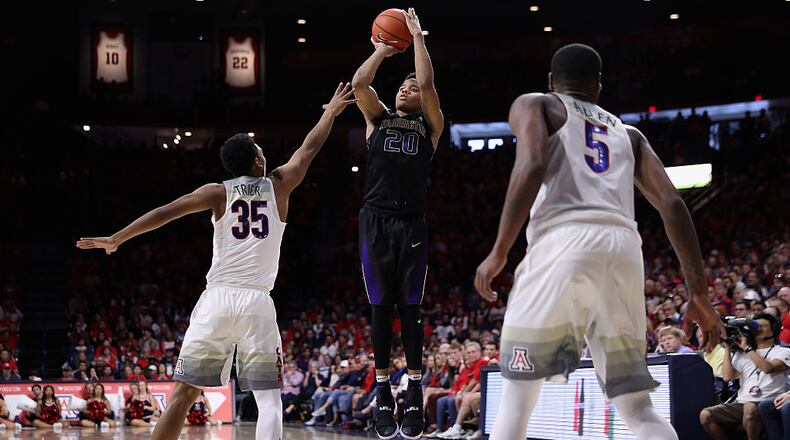What does mean?
Well, it’s fairly simple: Instead of forcing players to choose if/when they want to be considered for the NBA draft, make everyone eligible after they graduate from high school.
Then give those who are drafted a choice: Sign a contract and begin their pro careers (be that in the NBA, the G League or elsewhere) or go to college. If a player goes to college, a team retains his rights until the conclusion of his career, and he can sign whenever both sides deem it appropriate.
This might sound similar to the process in baseball, but there is a key difference: MLB teams lose the rights to high school picks if they opt to go to college. Then those players go back into the draft later in their careers.
NBA Draft: Who is Luke Kennard?
7 more great Franklin High School athletes https://t.co/T8Ubv7qx6Z
— rick mccrabb (@rickmccrabb) June 22, 2017
The MLB system would also be an improvement over how the NBA does things now, but the NHL model is best.
It provides far more flexibility for everyone as teams don’t have to sign a player before they feel he is ready (simply to avoid that feeling of missing out later that pretty much ruins the whole system now) and players don’t have to leave school until they know a team has a spot for them.
(And for those in need of an immediate payday, I propose the NCAA lifting rules against players’ doing endorsements and profiting off their likeness.)
Aside from those positives for NBA prospects and NBA teams, the model should benefit college basketball.
Stars – and potential stars like Markell Fultz who are barely in college basketball long enough to make a name for themselves compared to stars of earlier eras – would be less likely to leave school as early because the main incentive for jumping ASAP (maximizing potential draft status) would be removed.
SPORTS TODAY: Help on the way for the Reds?
Teams wouldn’t have to worry about rushing raw 19-year-olds to the NBA, either, because their rights would be secured for four years.
Does drafting players out of high school increase the bust factor compared to a one-and-done? Probably some, but I’m not sure the difference is all that significant. We already know what the draft looks like with high schoolers being eligible. Was it that much worse than what we’ve got now?
Instead of seeing Fultz play zero high school games, most fans saw him play… zero college games.
He’s a year older and physically more mature, but is he really much closer to being able to contribute for a decent NBA team?
On top of that, NBA fans who might otherwise have only a passing interest in the college game will have more of a reason to watch it – to see what their team could be getting in the future.
I used to think the roster instability this would create in college – it is not uncommon for an hockey player to leave school and sign with their NHL team unexpectedly after a strong season – was a significant downside to this model, but we’re pretty much already there now as transfers and graduate transfers have become increasingly common.
Coaches are already dealing with far more uncertainty on their roster from year to year than they used to – this might actually make things more stable.
The positives for all far outweigh the negatives in a move to a draft-and-follow system.
About the Author

